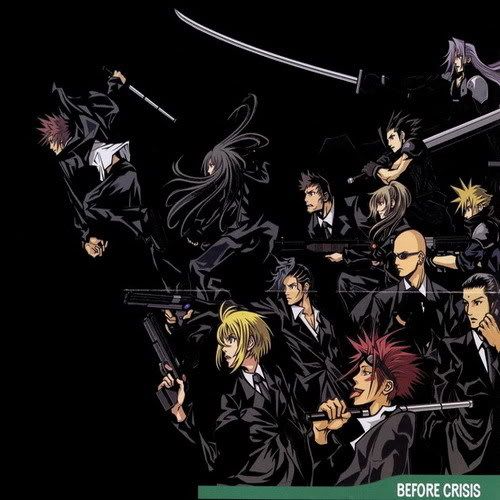Interactive and impromptu dramas have included elements of play long before the advent of modern wargames; the children's games of "Playing House" or "Cowboys and Indians" are in essence very simple role-playing games.
Modern role-playing games evolved from wargaming roots in the late 1960s. Where a marker or miniature figure once typically represented a squad of soldiers (although "skirmish level" games did exist where one figure represented one entity only), in early proto-RPGs each token invariably represented a single character.
The first role-playing games as such were played in the late 1960s in and around the University of Minnesota's wargaming society, especially in the groups moderated by Dave Wesley and Dave Arneson. Around the same time, Gary Gygax was developing the medieval wargame Chainmail (unusual, the vast majority of wargames were and are based around relatively modern wars like the Napoleonic Wars, the American Civil War and the World Wars) with much the same intentions.
Each player controlled the actions of that one character. The first edition rules of Dungeons & Dragons (abbreviated as D&D) reveal these roots in the use of a distance scale of one inch per ten feet (or ten yards, outdoors). D&D is considered the first modern role-playing game, and it has influenced nearly every role-playing game produced since its inception in 1974.
Dungeons & Dragons was phenomenally successful, bringing numerous players into the field of role-playing games and spawning a cottage industry centered around the hobby. As with all successful games, D&D spawned a large number of imitators and competitors, some of whom blatantly copied the "look and feel" of the game (e.g., one of the earliest competitors to Dungeons & Dragons was Tunnels and Trolls). Along with Dungeons & Dragons, early successes in the "first generation" of role-playing games included Chivalry & Sorcery, Traveller, Space Opera and RuneQuest.
Dungeons & Dragons soon became Advanced Dungeons & Dragons, which expanded the game (and the role-playing game industry in general) beyond amateur hobbyism and into the realm of "professional" gaming. As more elaborate, more expensive role-playing game products appeared on the market, organized conventions and professionally published magazines (such as Dragon Magazine) catered to the growing field, while role-playing moved out of college campuses and into mainstream life.
Role-playing games were originally played on a tabletop, because they involved paper, dice, and, often, miniature figures or tokens of some kind. From these origins, role-playing games have evolved in different directions. Some role-playing game rules systems are complex and attempt to be realistic simulations; other rules systems place a priority on game balance or on personality, character development, and storytelling. (Gamers later examined the differences in gameplay among role-playing games and came up with explanations on the different types of play, such as GNS Theory.)
The 1980s saw a glut in the role-playing game market, as numerous rulebooks, game systems, adventure modules, and other materials crowded the shelves of hobby shops. The biggest game in the field continued to be Advanced Dungeons & Dragons, which grew into a mass of consistent and inconsistent rules, explained in as many as fourteen different hardcover rulebooks. The games that relied heavily on obscure rules eventually folded, and Dungeons & Dragons itself was simplified somewhat with the release of the second edition of Advanced Dungeons & Dragons in 1989.
The advent of trading card games, most notably Magic: The Gathering, outshone the popularity of role-playing games during the mid-1990s. The sudden appearance and remarkable popularity of the Magic card game took many gamers (and game publishing companies) by surprise, as they tried to keep pace with fads and changes in the public opinion. For a while, some pessimists forecasted the "end" of role-playing games as a serious hobby because of the onslaught of trading card games, though eventually the dust settled and role-playing continued to thrive. The makers of Magic: The Gathering, Wizards of the Coast, bought out TSR and adapted the venerable Dungeons & Dragons game into a newer version of the game.
The 1990s proved to be an innovative decade seeing many new role-playing games flooding the markets. Perhaps the most popular role-playing game from this period was Vampire: The Masquerade. A game designed as an immersive storytelling experience, Vampire easily lent itself to LARPing. The game industry introduced a variety of new game systems during this time, until the buyout of TSR by Wizards of the Coast and the subsequent release of the D20 System/OGL rules.
The 1990s also saw many advances in computer technology taking role-playing into new technological frontiers. Computer role-playing games were already well established in the computer world. However, with the proliferation of home computers, the ability to play games online over BBSes or networks paved the way for MUDs, MMORPGs, and play-by-email (PBeM) gaming. The first stirrings of copyright and intellectual property concerns had already been felt during the latter part of the 80s with TSR leading the way in litigation precedents, first against Mayfair Games, the publishers of the Role-Aids line of game supplements, and later against file sharers.
In 2000, a significant change occurred in the tabletop role-playing industry. Wizards of the Coast released their open gaming license for use with their D20 system. This has allowed many small role-playing game publishers to quickly and easily create role-playing material that a large body of role-players could easily adapt for their own campaigns.
In recent years, Dungeons & Dragons has dominated the hobby economically, after a period of decline in the late 1990s. Owing partially to heavy marketing from corporate parent Hasbro, products branded Dungeons & Dragons, including small lines of subsidiary products developed by Kenzer & Company (Kingdoms of Kalamar) and White Wolf Game Studio (Warcraft: The Role-Playing Game), made up over fifty percent of the role-playing game products sold overall in 2002. Perhaps predictably, the economic dominance of Dungeons & Dragons has led to resentment from fans of competing game systems.
For those with a love of a specific genre, such as the ("Star Wars") universe, the characters and events from ("2000_AD") comic or ("Tolkien's 'Lord of the Rings'") for example; there are more and more game systems and associated source books available. These allow players to explore worlds and even play alongside characters which they may have watched or read about since childhood. Combining such roots in childhood play behaviour - mentioned earlier - as they possess, with the chance to emulate even the most fantastic heroes; makes Role playing games one of the great vicarious thrills of our age. Where they go from here is limited only by the imagination of the players.

























































